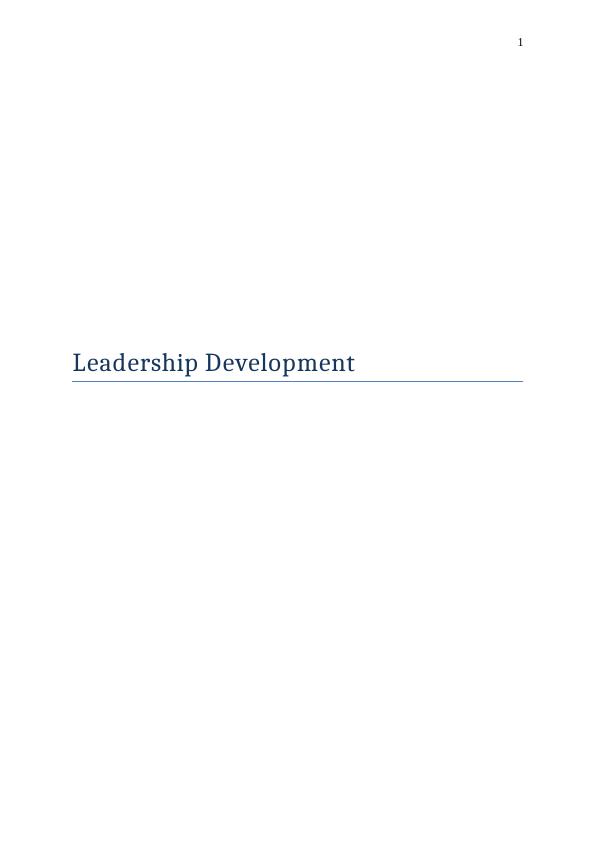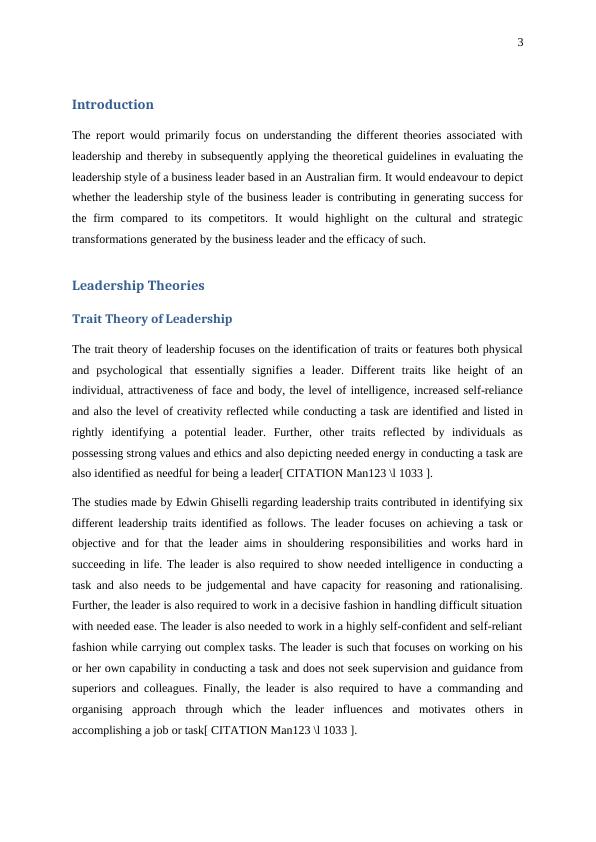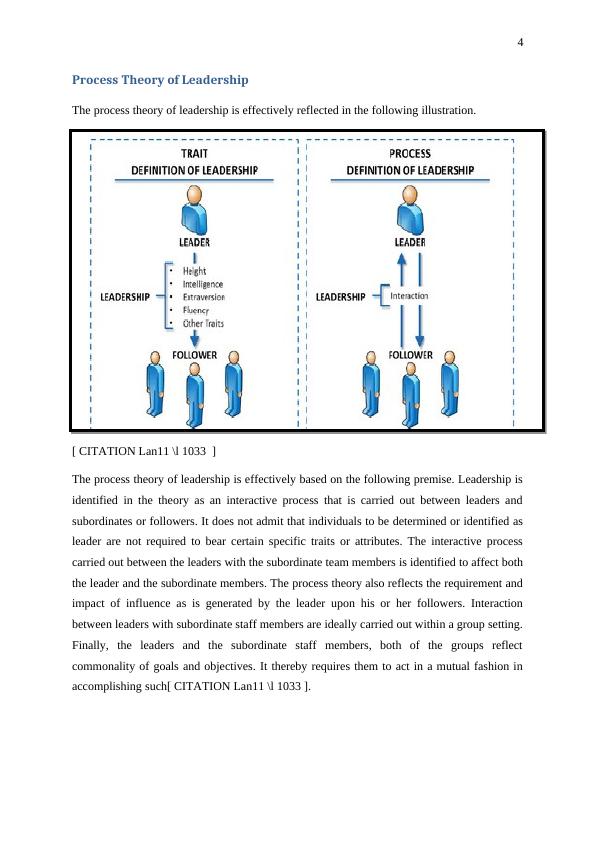Theory of Leadership
Added on 2019-11-26
12 Pages3175 Words117 Views
1Leadership Development

2Table of ContentsIntroduction................................................................................................................................3Leadership Theories...................................................................................................................3Trait Theory of Leadership....................................................................................................3Process Theory of Leadership................................................................................................4Behavioural Aspect of Leadership.........................................................................................5Contingency Theory of Leadership........................................................................................5Participative/Democratic Leadership Theory........................................................................5Servant Leadership Theory....................................................................................................6Transformational Leadership Theory.....................................................................................6Theory of Transactional Leadership......................................................................................7LMX Theory of Leadership...................................................................................................7Evaluation of the Leadership Style of Brad Banducci...............................................................7Organisational Culture of Woolworths and Brad Banducci......................................................8Change Management in Woolworths and Brad Banducci.........................................................9Conclusions..............................................................................................................................10References................................................................................................................................11

3IntroductionThe report would primarily focus on understanding the different theories associated withleadership and thereby in subsequently applying the theoretical guidelines in evaluating theleadership style of a business leader based in an Australian firm. It would endeavour to depictwhether the leadership style of the business leader is contributing in generating success forthe firm compared to its competitors. It would highlight on the cultural and strategictransformations generated by the business leader and the efficacy of such. Leadership TheoriesTrait Theory of LeadershipThe trait theory of leadership focuses on the identification of traits or features both physicaland psychological that essentially signifies a leader. Different traits like height of anindividual, attractiveness of face and body, the level of intelligence, increased self-relianceand also the level of creativity reflected while conducting a task are identified and listed inrightly identifying a potential leader. Further, other traits reflected by individuals aspossessing strong values and ethics and also depicting needed energy in conducting a task arealso identified as needful for being a leader[ CITATION Man123 \l 1033 ]. The studies made by Edwin Ghiselli regarding leadership traits contributed in identifying sixdifferent leadership traits identified as follows. The leader focuses on achieving a task orobjective and for that the leader aims in shouldering responsibilities and works hard insucceeding in life. The leader is also required to show needed intelligence in conducting atask and also needs to be judgemental and have capacity for reasoning and rationalising.Further, the leader is also required to work in a decisive fashion in handling difficult situationwith needed ease. The leader is also needed to work in a highly self-confident and self-reliantfashion while carrying out complex tasks. The leader is such that focuses on working on hisor her own capability in conducting a task and does not seek supervision and guidance fromsuperiors and colleagues. Finally, the leader is also required to have a commanding andorganising approach through which the leader influences and motivates others inaccomplishing a job or task[ CITATION Man123 \l 1033 ].

4Process Theory of Leadership The process theory of leadership is effectively reflected in the following illustration. [ CITATION Lan11 \l 1033 ]The process theory of leadership is effectively based on the following premise. Leadership isidentified in the theory as an interactive process that is carried out between leaders andsubordinates or followers. It does not admit that individuals to be determined or identified asleader are not required to bear certain specific traits or attributes. The interactive processcarried out between the leaders with the subordinate team members is identified to affect boththe leader and the subordinate members. The process theory also reflects the requirement andimpact of influence as is generated by the leader upon his or her followers. Interactionbetween leaders with subordinate staff members are ideally carried out within a group setting.Finally, the leaders and the subordinate staff members, both of the groups reflectcommonality of goals and objectives. It thereby requires them to act in a mutual fashion inaccomplishing such[ CITATION Lan11 \l 1033 ].

End of preview
Want to access all the pages? Upload your documents or become a member.
Related Documents
Leadership Traits and Challenges of Bradford Banducci (CEO WOOLWORTHS)lg...
|10
|2792
|43
Leadership and management theories in Woolworths Group and ASDA Grouplg...
|8
|1499
|142
Leadership Management Report 2022lg...
|11
|2072
|16
Leadership Qualities in Woolworths Companylg...
|12
|2625
|395
Leadership Styles of Australian Leaders - Deskliblg...
|7
|2228
|445
Dynamic Leadership: A Personal Development Planlg...
|16
|4187
|415